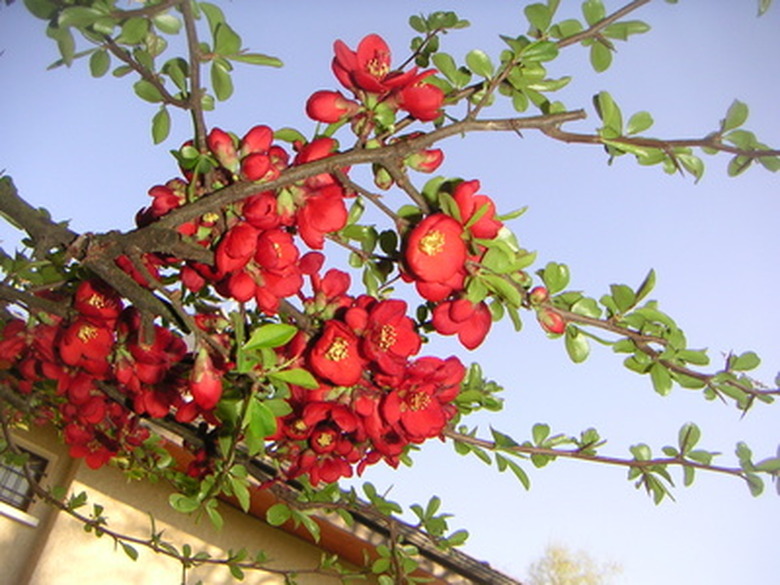The Best Time To Transplant Crabapple Trees
People enjoy growing crabapple trees for their showy display of beautiful flowers and brightly colored fruit. Crabapples (Malus spp.) prefer a sunny location. Although crabapple trees tolerate a wide variety of soil types, they need well-drained soil.
Features
Tree heights vary from 8 to 40 feet. Shapes include "weeping (pendulous), rounded, spreading (horizontal), upright (columnar), vase-shaped, and pyramidal," according to Ohio State University Extension's website. People sometimes use crabapple trees as container plants trained as bonsai plants, according to the University of Florida website. Frequent uses for crabapple trees include as landscaping around homes, public and commercial buildings, parks, schools, streets and highways.
- People enjoy growing crabapple trees for their showy display of beautiful flowers and brightly colored fruit.
- Although crabapple trees tolerate a wide variety of soil types, they need well-drained soil.
Considerations
Transplanting any tree puts stress on it. Fortunately, crabapple trees have a medium-high tolerance for transplanting, according to North Dakota State University's website. However, avoid storing the crabapple tree dormant for extended periods before transplanting it because that often results in the tree not readily budding.
Time
Most crabapples start out as field-planted trees at a nursery. You transplant a tree every time you purchase and plant one. However, a bare-root tree purchased from a nursery has about 75 percent of its root system intact, versus only about 25 percent for an existing landscape tree dug up to transplant. The best time to transplant any crabapple tree is in early spring after the ground thaws and before the crabapple buds, according to North Dakota State University.
- Transplanting any tree puts stress on it.
- However, a bare-root tree purchased from a nursery has about 75 percent of its root system intact, versus only about 25 percent for an existing landscape tree dug up to transplant.
Crabapple Trees
Crabapple fruits can range from a mere 1/4 inch in diameter to 2.5 inches across. Both "Dolgo" and "Rescue" have red fruits that get to about 1.5 inches. Several small crabapples are compact and will fit nicely into area with limited space. It has profuse white flowers. " Lancelot" is a white flowering tree with a compact habit that reaches only 10 feet tall. " Those with excellent resistance to at least two diseases include "Robinson," with reddish-pink flowers and bronzy foliage, and the Siberian crabapple (M. baccata) variety "Jackii," with white flowers and great cold-hardiness.
References
- North Dakota State University, Agriculture: Transplanting Trees and Shrubs
- Ohio State University Extension: Selection, Care, and Use of the Ornamental Crabapple
- University of Florida: Malus spp. Crabapple
- Manitoba Agriculture, Food and Rural Initiatives: Manitoba Apple and Crabapple Cultivar Survey
- Missouri Botanical Garden: Malus pumila "Tuscan" Stark Emerald Spire
- Duke University: Southern Crabapple
- North Carlina State University: Malus x "Pink Princess"
- Cornell University: Malus "Leprechaun"
- North Carolina State University: Superior Crabapple Trees for the Landscape
